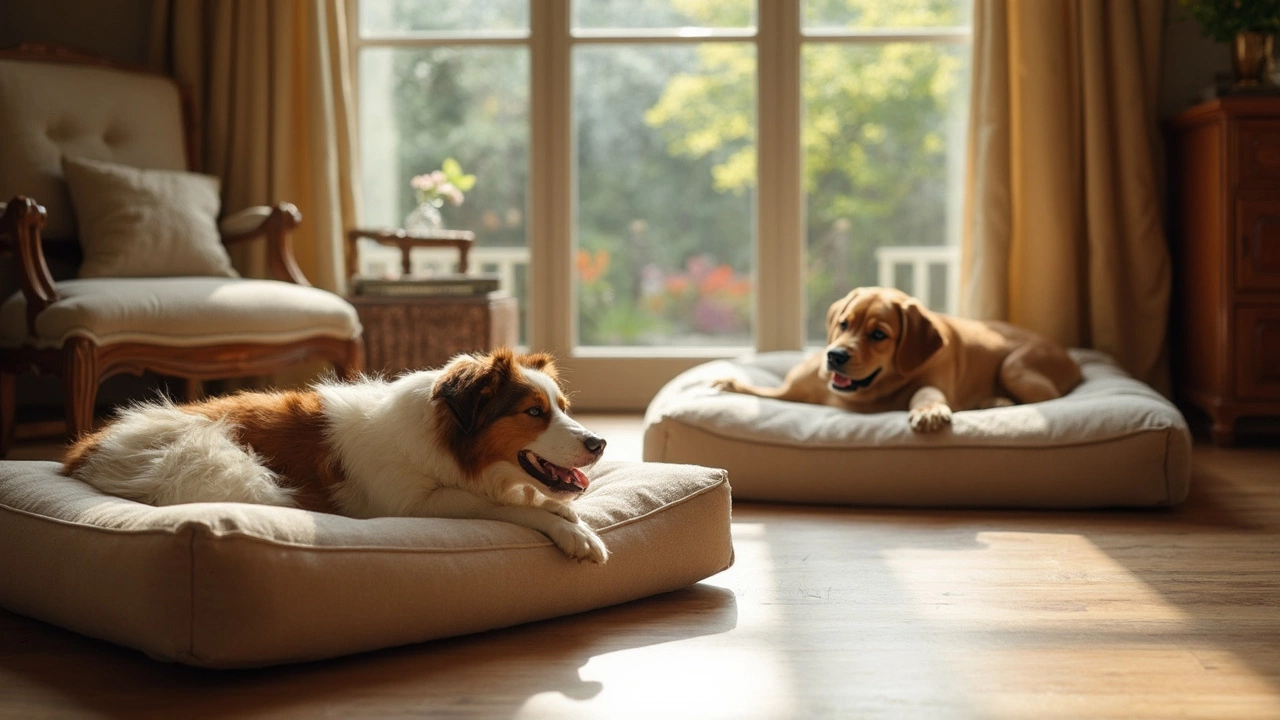Hard Beds for Dogs – Why They Matter and How to Choose
If you’ve ever noticed your dog digging or rolling around on a soft cushion, you might wonder if a firmer surface would be better. Hard beds give dogs a stable place to rest, support their joints, and keep them cool in warm weather. In this guide we’ll break down the main benefits, the features you should check, and a few tips for picking the perfect hard bed for your pup.
Benefits of Hard Beds for Dogs
First off, a hard bed can help with joint health. Older dogs or large breeds often develop arthritis, and a firm surface reduces pressure on their hips and knees. Unlike plush sofas that sink under weight, a hard bed spreads the load evenly, which eases aches.
Second, hard beds stay cool. Soft beds tend to trap heat, especially if they’re filled with foam or down. A solid wood or dense rubber base doesn’t hold onto warmth, so your dog stays comfortable on hot summer days without sweating.
Third, they’re easy to clean. A smooth, non‑porous surface can be wiped down with a damp cloth or sprayed with a pet‑safe cleaner. No need to toss out stuffing or worry about hidden odors.
Finally, many dogs simply prefer the firmness. Some breeds, like Greyhounds, love to stretch out on a flat, firm platform because it mimics the feel of the ground they’re used to when they race.
Key Features to Look for When Buying
Material: Look for high‑density foam, solid wood, or reinforced rubber. These materials keep the bed firm for years. Low‑grade foam may flatten quickly and lose its support.
Size: Measure your dog from nose to tail and add a few inches. A bed that’s too small forces them to curl, which defeats the purpose of a hard surface.
Non‑slip base: A rubberized underside prevents the bed from sliding across floors, especially on tile or hardwood.
Cover: Choose a removable, washable cover made of breathable fabric like canvas or nylon. This keeps the bed fresh without compromising the hard core.
Style: Some hard beds come with a low lip or raised edges for dogs that like to lean. Others are completely flat. Pick the style that matches your dog’s sleeping habits.
When you’re shopping, read the product description for details on density (a rating of 30+ pounds per cubic foot is a good benchmark) and warranty length. A longer warranty usually means the manufacturer trusts the bed’s durability.
Putting a hard bed in the right spot matters too. Place it in a quiet corner, away from drafts, and near a water bowl if your dog likes to drink before napping. This creates a routine spot that feels safe.
In short, a hard bed can be a simple upgrade that improves comfort, joint health, and cleanliness for your dog. By checking the material, size, and extra features, you’ll find a bed that lasts and keeps your furry friend happy.
Posted By Bryndle Redding On 1 Mar 2025 Comments (0)
Do Dogs Prefer Hard or Soft Beds?
Choosing the right bed for your dog can make a world of difference in their comfort and health. This article explores whether dogs prefer hard or soft beds, highlighting the benefits of each type and offering tips to help you decide. Understand your dog's behaviors and health needs to make informed choices about their bedding. Discover surprising facts about dog sleep habits and how to suit their personal preferences. Equip yourself with practical tips for ensuring your furry friend's bedding offers optimal comfort.
READ MORE